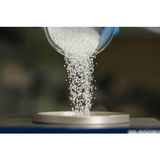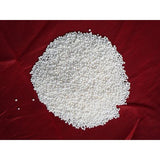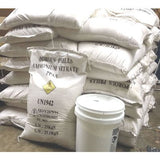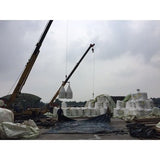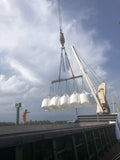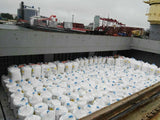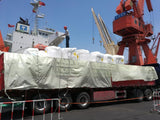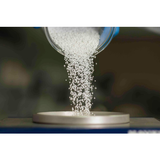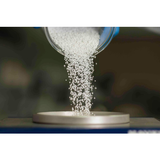High-density Ammonium Nitrate (HDAN) is used for emulsion, and It can be used underground and also in an open-pit mine. Ammonium Nitrate is the most widely used component because it is an excellent oxidizer. It generates 60% oxygen by weight therefore it is used as an oxygen supplier.
WHAT KEMCORE PROVIDES AS A PARTNER?
Reliable Supply
KEMCORE is always prepared to fulfil orders as they're placed and deliver the products customers need.
Commitment to Safety
KEMCORE has been safely and responsibly distributing High-Density Ammonium Nitrate (HDAN) for decades and continues to make advancements through improved packaging options, on-site unloading services, and comprehensive training for our customers.
Dedicated Support
Support is available whether it’s assisting with High-Density Ammonium Nitrate (HDAN) handling or regulatory needs like licensing, permitting, and compliance monitoring.
COUNTRY OF ORIGIN
- China
SYNONYMS
Ammonium Nitrate, High-Density Ammonium Nitrate, High-Density Ammonium Nitrate 99%, HDANNitric acid ammonium salt; Nitram; Nitropril; CPAN; Chemically Pure Ammonium Nitrate; Security Sensitive Ammonium Nitrate; SSAN.
Ammonium nitrate Recommended Use: General chemical; explosives manufacture.
Ammonium Nitrate is the most widely used component because it is an excellent oxidizer. It generates 60% oxygen by weight and is used as an oxygen supplier. Due to this property and its low price, it is most commonly used in making explosives base. Ammonium Nitrate is also used in many non-ANFO explosives.
Ammonium Nitrate is highly soluble in water. 1n 100ml water its solubility a 0,20,40,20,80 and 100de is 118,150,297,410,576 and 1024g respectively.
Initiator in industrial explosives: Ammonium Nitrate is a weak emulsion explosive base. Its explosion temperature is 1130℃.
It forms the explosive base in ANFO- (Ammonium Nitrate Fuel Oil)
Properties & Specifications of Explosive Grade AN Prills.
- Non-Caking consistency
- Low moisture content
- Free- flow sizing
- Oil absorbency
- Low particle density
- Good friability &
- Low clay content
- For good blasting, our prills size distribution is between 6-20 mesh
- Prills are porous which enables it to readily absorb and hold the correct amount of fuel oil (about 5.7%). Such high porosity of explosive grade Ammonium Nitrate prills is needed because they can absorb the fuel oil when mixed and form uniform ANFO.
- Oil is then distributed throughout the prill particle improving the detonability of the ANFO mixture.
Molecular Formula: H4N2O3
CAS Number: 6484-52-2
Physical Properties
Appearance: White crystals, odorless, hygroscopic, deliquescent.
Form: White hygroscopic crystals, Transparent, hygroscopic, deliquescent crystals or white granules/prills
Odor: Odorless
Boiling point: 210℃
Melting/freezing point: 169℃
Specific gravity: 1.725
Flashpoint: 210°C
Synonyms: Glacial acetic acid; Acetic acid solution; acetic acid 50%; acetic acid, of a concentration of more than 10 per cent, by weight, of acetic acid; Acetic Acid Glacial BP; Natural Acetic Acid; Acetic acid (36%); Acetic acid, food grade; Acetic Acid Glacial; GAA; Acetic Acid, Glacial
It is a colourless liquid that when undiluted is also called glacial acetic acid. It has a distinctive sour taste and pungent smell.
Acetic acid uses: Additive in industrial explosives in Mining.
Other uses include use of acetic acid in the production of vinyl acetate monomer, acetic anhydride and ester production.
Chemical gassing agents -In the case of emulsion explosives, using Acetic acid can accelerate the gassing process. The chemically gassed emulsions may take 40 – 50 minutes for completion of gassing within the blast holes, particularly when the emulsion is colder.
In cases where acetic acid is used, it is added to the emulsion prior to gassing, the desired amount of acid is mixed in the emulsion, before adding the gasser.
A gassing solution comprising sodium nitrite in water together with the selected enol compound and acetic acid is introduced into the emulsion explosive at the blast hole by entraining the gassing solution into a stream of the emulsion explosive using pumps.
The solution pH is an important parameter in the gassing of emulsion explosives due to the high cost associated with acid addition therefore a pH value should preferably be maintained at 4.1 or below.
|
Identifiers |
|
|
Abbreviations |
AcOH |
|
CAS number |
64-19-7 |
|
PubChem |
176 |
|
ChemSpider |
171 |
|
UNII |
Q40Q9N063P |
|
EC number |
200-580-7 |
|
UN number |
2789 |
|
Properties |
|
|
Molecular formula |
C2H4O2 |
|
Molar mass |
60.05 g mol |
|
Appearance |
Colourless liquid |
|
Odor |
Pungent/Vinegar-like |
|
Density |
1.049 g cm |
|
Melting point |
16 to 17 °C; 61 to 62 °F; 289 to 290 K |
|
Boiling point |
118 to 119 °C; 244 to 246 °F; 391 to 392 K |
|
Solubility inwater |
Miscible |
|
Acidity (pKa) |
4.76 |
|
Basicity (pKb) |
9.198 (basicity of acetate ion) |
|
Refractive index(nD) |
1.371 |
|
Viscosity |
1.22 mPa s |
|
Dipole moment |
1.74 D |
1- TRANSPORT INFORMATION
- Transport-UN 2789
- Hazard Class No. : 8
- Packing Group: II
- H.S. Code: 2915211900
2- STORAGE & HANDLING
- Stable at room temperature in closed containers under normal STORAGE & HANDLING and handling conditions. Refer to SDS sheet
3- PACKING
|
Packing type |
Tons/FCL |
|
IBC Drums |
18tons/FCL |
|
30kg Drums |
21tons/FCL |
|
200Kg drums |
16tons/FCL |
4.Environmental impact
- Acetic acid biodegrades readily under both aerobic and anaerobic conditions.
- Acetic acid does not absorb light with wavelengths >290 nm(4), and is not expected to be susceptible to direct photolysis by sunlight(SRC).
- Incase of spillage neutralize spill with soda ash or lime.
5. Download our Acetic acid msds for more handling information.











